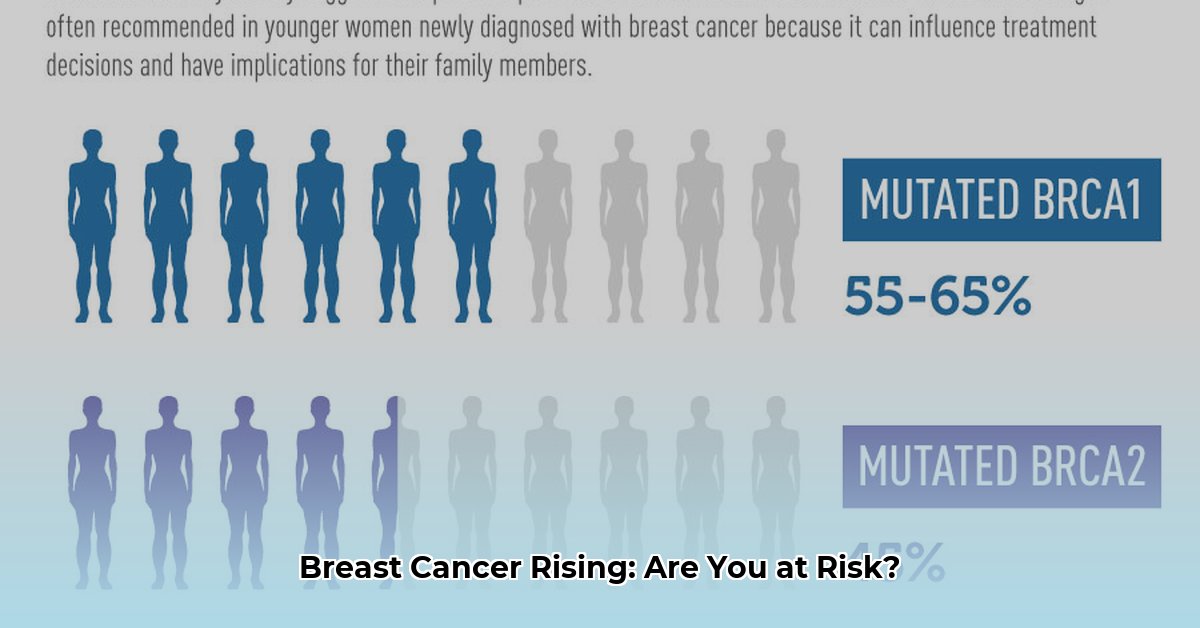Decoding Your Risk: Factors You Can and Cannot Control
Understanding your breast cancer risk is about empowering yourself, not alarming yourself. This comprehensive guide breaks down the factors that influence your risk, separating those you can’t change from those you can, and offers actionable steps for prevention and early detection.
Non-Modifiable Risk Factors: Understanding Your Baseline
Some risk factors are inherent, like your genetic makeup or family history. While you can’t change these, knowing about them helps you and your doctor make informed decisions about your healthcare.
- Sex Assigned at Birth: Being female significantly increases breast cancer risk compared to being male. Ongoing research explores the biological reasons behind this difference.
- Age: Risk naturally increases with age, with most diagnoses occurring after 50. This underscores the importance of age-appropriate screening.
- Family History and Genetics: A family history of breast or ovarian cancer, especially in close relatives, may increase your risk. Inherited gene mutations, like BRCA1 and BRCA2, can substantially elevate risk. Genetic testing can help identify these mutations.
- Personal Medical History: A prior breast cancer diagnosis, even if successfully treated, increases the risk of recurrence. Some benign breast conditions may also slightly elevate risk.
- Reproductive History: Early menstruation (before 12) or late menopause (after 55) increases lifetime estrogen exposure, a potential risk factor.
- Breast Density: Dense breast tissue can make mammograms harder to read and is independently linked to a higher risk. Research is ongoing to understand this connection.
- Prior Chest Radiation: Radiation therapy to the chest, especially before age 30, can increase risk later in life.
- DES Exposure In Utero: Women whose mothers took DES during pregnancy have a slightly elevated risk.
Modifiable Risk Factors: Taking Charge of Your Health
Empower yourself by focusing on the risk factors you can control. These lifestyle choices and habits can make a real difference.
- Weight Management: Maintaining a healthy weight, especially after menopause, can help regulate estrogen levels, potentially reducing risk.
- Physical Activity: Regular exercise, at least 150 minutes of moderate-intensity or 75 minutes of vigorous-intensity aerobic activity per week, may offer protective benefits.
- Alcohol Consumption: The more alcohol you consume, the higher your risk. Limiting intake or abstaining altogether is the best approach.
- Smoking: Smoking damages nearly every organ, increasing the risk of several cancers, including breast cancer. Quitting is crucial for overall health.
- Healthy Diet: A diet rich in fruits, vegetables, and whole grains provides essential nutrients and may play a protective role against cancer. Limiting processed meats, red meats, and sugary drinks is also recommended.
- Breastfeeding: Breastfeeding may offer some protection against breast cancer, possibly due to hormonal and cellular changes.
- Hormone Use: Hormonal birth control and post-menopausal hormone therapy can slightly increase risk. Discuss the benefits and risks with your doctor to make informed decisions.
| Modifiable Risk Factor | Action You Can Take | Potential Benefit |
|---|---|---|
| Excess Weight | Maintain a healthy weight through diet and exercise. | May lower estrogen levels and reduce risk. |
| Lack of Physical Activity | 150 minutes of moderate or 75 minutes of vigorous exercise weekly. | May influence hormone levels and boost overall health. |
| Alcohol Consumption | Limit or avoid alcohol intake. | Reduces exposure to a known risk factor. |
| Smoking | Quit smoking. | Eliminates exposure to numerous carcinogens. |
| Unhealthy Diet | Focus on fruits, vegetables, whole grains; limit processed foods, red meats, and sugary drinks. | Provides essential nutrients and may reduce risk. |
| Not Breastfeeding | Breastfeed, if possible. | May offer hormonal and cellular benefits. |
| Hormone Therapy | Discuss risks and benefits with your doctor. | Make informed decisions about hormone use. |
Understanding the Rise in Breast Cancer Rates
Several factors probably contribute to the increasing breast cancer rates, especially among younger women. Some of these include:
- Lifestyle Changes: Increased rates of inactivity and obesity may contribute to higher estrogen levels, a potential risk factor.
- Environmental Factors: Research is ongoing to explore potential links between environmental exposures and breast cancer risk.
- Improved Detection: Advances in imaging technology likely lead to earlier detection of cancers that might have previously gone undiagnosed.
- Reproductive Patterns: Having children later in life or having fewer children may slightly increase risk.
Addressing Racial Disparities
While breast cancer incidence may be slightly higher in white women, Black women face higher mortality rates. This disparity highlights critical issues of access to quality care and the need for further research to understand and address contributing factors.
Taking Action: Your Path to Prevention and Early Detection
- Breast Self-Awareness: Regularly examine your breasts to familiarize yourself with what’s normal for you and detect any changes.
- Consult Your Doctor: Discuss your risk factors with your doctor to determine a personalized screening plan. Regular checkups and mammograms are crucial for early detection.
- Trusted Resources: The American Cancer Society, the Centers for Disease Control and Prevention (CDC), and the National Breast Cancer Foundation offer valuable information and support.
Remember, understanding your risk empowers you to make proactive choices. Work with your doctor, stay informed, and take an active role in your breast health. Early detection significantly improves treatment outcomes and offers the best chance for a healthy future.







